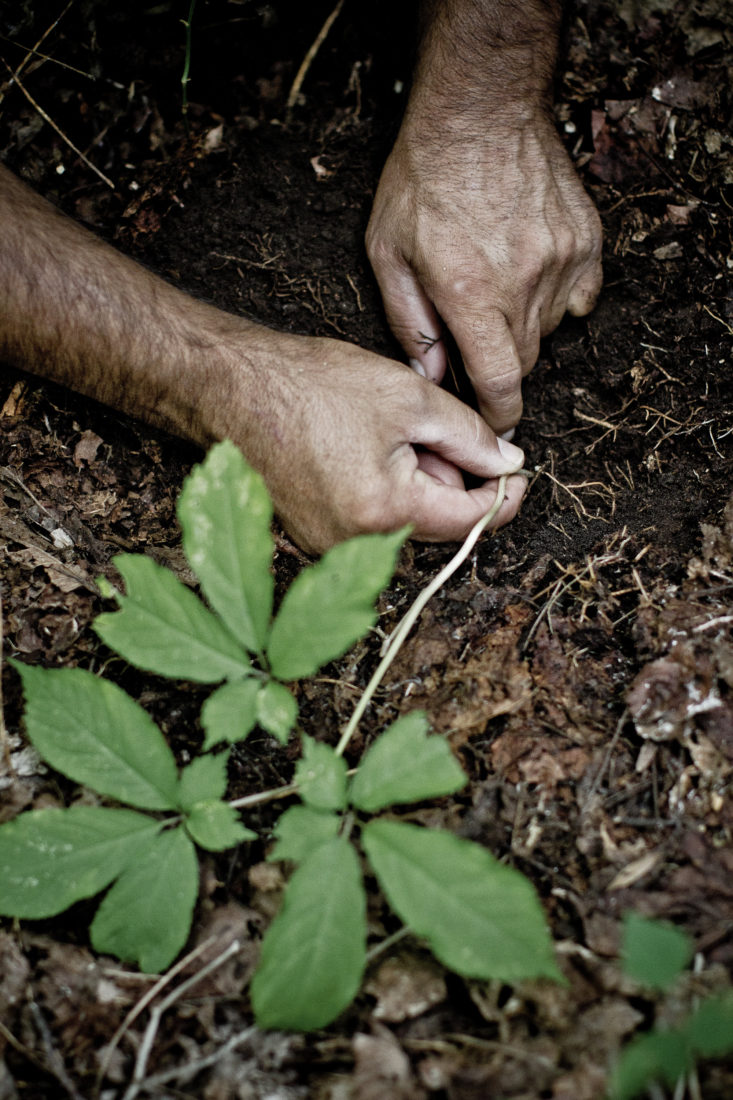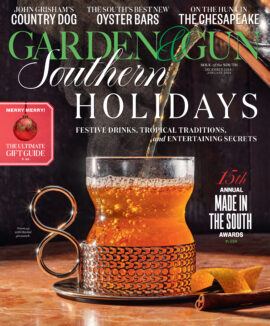On a sunny fall morning, Gary Kauffman walks along the base of a steep hill in the Nantahala National Forest in western North Carolina, his eyes peeled to the ground. “Here we go,” he says, stooping to slip his hand under a feathery fern with a tip like an arrowhead. “People around here call this ‘sang-find’ because it’s supposed to point you to the ginseng.” It points straight up the hill—a quiet, shaded cove under a canopy of hardwoods.
Kauffman, a botanist and ecologist with the U.S. Forest Service, tracks the dwindling population of Panax quinquefolius, or American ginseng—the most heavily traded wild plant in the United States. Up to 85,000 pounds of fresh ginseng roots are legally dug each year. Much of it comes from the Southern Appalachians, and the vast majority ends up in Hong Kong for use in traditional Chinese medicine, where it has replaced Panax ginseng, its Asian cousin, virtually extinct in the wild. Botanists such as Kauffman are working to make sure the same fate doesn’t befall American ginseng.
Since the late 1800s, the plant’s wild populations have been in steep decline, a problem exacerbated by huge spikes in its price—as high as $1,200 per pound in recent years. (Smoother-skinned cultivated ginseng commands only about 3 percent of the price of wild.) “Between twenty million and forty million roots get harvested from our forests every year,” says Jenny Cruse-Sanders, director of research and conservation at the Atlanta Botanical Garden. “That’s unsustainable.”

Photo: Brian Woodcock
A wild ginseng plant in North Carolina.
Much like the plant itself, the story of North American ginseng remains patchy and hidden in the hills. It was first discovered in the early 1700s near Montreal, Canada, by an enterprising Jesuit priest who knew of both the value and scarcity of Asian ginseng. Both Daniel Boone and John Jacob Astor made fortunes on it. The South’s prominence in the ginseng trade grew after 1975, when the Convention on International Trade in Endangered Species of Wild Fauna and Flora began to prohibit trade in wild ginseng from Canada. Today, of the nineteen states certified to export ginseng, much of it comes from North Carolina, Kentucky, and Tennessee.
But there are rules. Ginseng doesn’t generally produce seed until its fifth year, after its annual stalk splits into three leafy prongs. Federal law prohibits exporting anything younger, and enforcers set up sting operations and impose hefty fines on violators. So diggers secretly track the growth of plants and pounce as soon as the season opens. They can be a protective lot. Cookbook author Ted Lee recalls being chased from some land in North Carolina he was considering buying. “This guy came barreling out of a parked VW bus swinging a machete and told us to get the f— away from his ginseng,” he says. “I was like, ginseng?”
Diggers sell the roots for cash to a licensed dealer, such as Ed Fletcher of Banner Elk, North Carolina. Fletcher meets many of the same diggers every year and prefers doing business with “traditional diggers who learned from their fathers and grandfathers,” he says. “They know to put the seeds around where the plant grew, and how to plant them so they germinate. They’re good stewards.”
Alas, our expedition—a mere two weeks into the season—has so far turned up only numerous pocks in the soil (created by long metal probes called “sang sticks”) as well as remnants of food litter. “Once you see the Mountain Dew cans and MoonPie wrappers, you know you’re too late,” Kauffman says. But finally, we spy the plant’s telltale red berries. “It’s a three-pronger,” Kauffman says, indicating that the ginseng could be legally harvested. But, of course, we leave this root in the ground. That’s not why Kauffman’s here.








